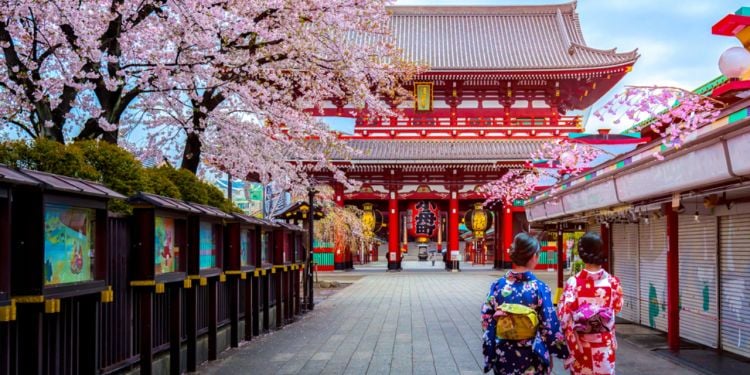Adjusting to the local culture in Tokyo

Saying sorry, thank you, addressing a stranger, your boss or your family, talking, getting around. All these natural things lose some of their natural automatisms when you go abroad, unfortunately. You will need to ensure that you're up to date, especially if you are traveling to a country with a culture that is totally different from yours. How to adapt to the local culture in Tokyo? Here is a guide to the best practices. Of course, we are focusing on Tokyo, but these tips are applicable everywhere in Japan.
Apologies in Tokyo
Japanese is one of the most courteous languages in the world. Politeness is an art in itself. The words used to apologize are also used in other circumstances. Here is a short list and explanation of these nuances.
Sumimasen
"Sumimasen" is a formal expression that means "excuse me". It is used to apologize, but also for many other situations in everyday life. "Sumimasen" can be used to start a dialogue, to send a message, to show respect, gratitude, and politeness, to say thank you... It is used to address a superior, an elderly person, a stranger.
In everyday language, you may hear "suimasen" instead of "sumimasen". This is the informal form of "sumimasen" and should be kept when talking to acquaintances and friends. Remember that the correct form is "sumimasen".
You may use this word when, for example:
- You bump into someone in the street.
- You sneak off the subway, the train, or out of a crowd.
- Someone holds the door for you/let you pass.
- You ask for information.
- You approach someone on the street.
- Someone is doing you a favor.
- Someone is helping you (e.g., finding your way).
- You have made a mistake.
- You call a waiter in a restaurant, a shop employee, etc.
Gomen nasai
It means "forgiveness" and indicates that you have made a mistake. Unlike "sumimasen", you will not use it to address someone in the street or to start a sentence. "Gomen nasai" expresses the wish to be forgiven. It is a colloquial expression used among friends and relatives.
Expressions that derive from "gomen nasai":
- Gomen, which means sorry!
- Gomen ne: is sorry! with the particle "ne" which can be considered as an appeasing emoticon. Placed at the end of a sentence, "ne" is used to tone down what is being said.
Shitsurei Shimasu
The term "shitsurei" means "rudeness". Therefore, the word is used to say "I was rude" like in "Please excuse my rudeness". The expression "shitsurei shimasu" is considered to be polite. It should be used when speaking to a superior. You can also use "shitsurei shimashita". It is the same expression but conjugated in the past tense.
Môshiwake Gozaimasen (Deshita)
Literally, the term means, "I don't know how to apologize to you" or "My mistake is inexcusable. I am embarrassed". It is a very polite expression to be used only in a professional environment, with your superiors, people who are socially higher than you, or clients eventually.
There is an even more polite version. The expression "makotoni môshiwake arimasen deshita" has a meaning close to "My rudeness is beyond measure. My fault is inexcusable. I sincerely apologize".
Conversely, there are also slightly less polite versions than "môshiwake gozaimasen", like:
- Môshiwake arimasen, which is the same expression, but with the verb conjugated to its standard form.
- Môshiwake nai is also the same expression, but with the verb conjugated in the simple form.
Gestures in Tokyo
When one asks for forgiveness or apologizes, they should atone by joining their body language to their words. Usually, a slight bow of the head along with the words would suffice, but the more serious the apology, the more pronounced the bow should be. As for the famous "dogeza", it is almost never used. This expression could be translated as "to sit lower than the ground".
The concept of honne and tatemae in Tokyo
Honne and tatemae are pillars of social relationships in Japanese culture. "Honne" refers to the true wishes and real intentions of a person, whereas "Tatemae" symbolizes the external demeanor of a person in society.
The concept of honne and tatemae is meant to pacify relationships, but it is often misunderstood by some foreigners, especially those with Western culture. Since it caters for different " self-stances " that depend on given social contexts, the honne and tatemae concept cannot be reduced to hypocrisy, as would suggest some Western interpretations. Moreover, in all cultures, individuals act differently in society and in private and this is where this notion becomes relevant.
Far from being opposed to sincerity, the honne and tatemae concept is, in fact, a social convention that aims at regulating human relations. Nevertheless, it should be stressed that in Japan, these social conventions play a very important role. It often takes more time to establish a sincere dialogue. But of course, it all depends on the individual.
How to say "no" in Japanese
In Japanese, No is said "iie". But you will seldom hear it because it is considered too direct and blunt. In Japanese culture, people prefer to find polite ways to express their refusal.
Chotto
"Chotto" means "a little". It is also used to decline an invitation, reject a proposal, or refuse something. It is widely used and will be useful in all situations of everyday life.
Sumimasen
In a more formal way, "sumimasen" can have the same meaning as "chotto". It means to refuse in a polite way.
Social norms in Tokyo
On the street
In the streets of Tokyo, people are supposed to walk on the left. This is not a common code in all of Japan. In Osaka, for instance, there is no particular way of walking. But even in Tokyo, the rule is not written in stone. On the street (especially on busy streets), people walk as they please.
An the train stations
Whether you are in Tokyo, Osaka, or elsewhere in Japan, it is better to follow the right traffic flow, especially during rush hours. Arrows on the ground will show you the way to go.
At work
Normally, at work, one is required to be in the proper attire. An employee's basic work outfit is a dark suit, white shirt and tie. Women have more options; they can wear pastel-colored suits or skirts. But they are also required to wear makeup and high heels. The KuToo movement was born in Japan to challenge this injunction.
Fashion
The Japanese fashion is loose in the street. In Tokyo, young adults show themselves in the trendy districts of Shibuya and Harajuku. Shibuya is the fashion district with the latest trends. Harajuku is its eccentric and pop-rock counterpart.
Extra tips for adjusting to the Japanese culture
Forget your misconceptions, and do not compare everything with what happens in your country. Observe the locals and do as they do. Don't hesitate to ask for help when you don't understand something.
Unsurprisingly, speaking Japanese will make it easier for you to adapt to the culture. It will also show your motivation to integrate. Take classes and study regularly.








